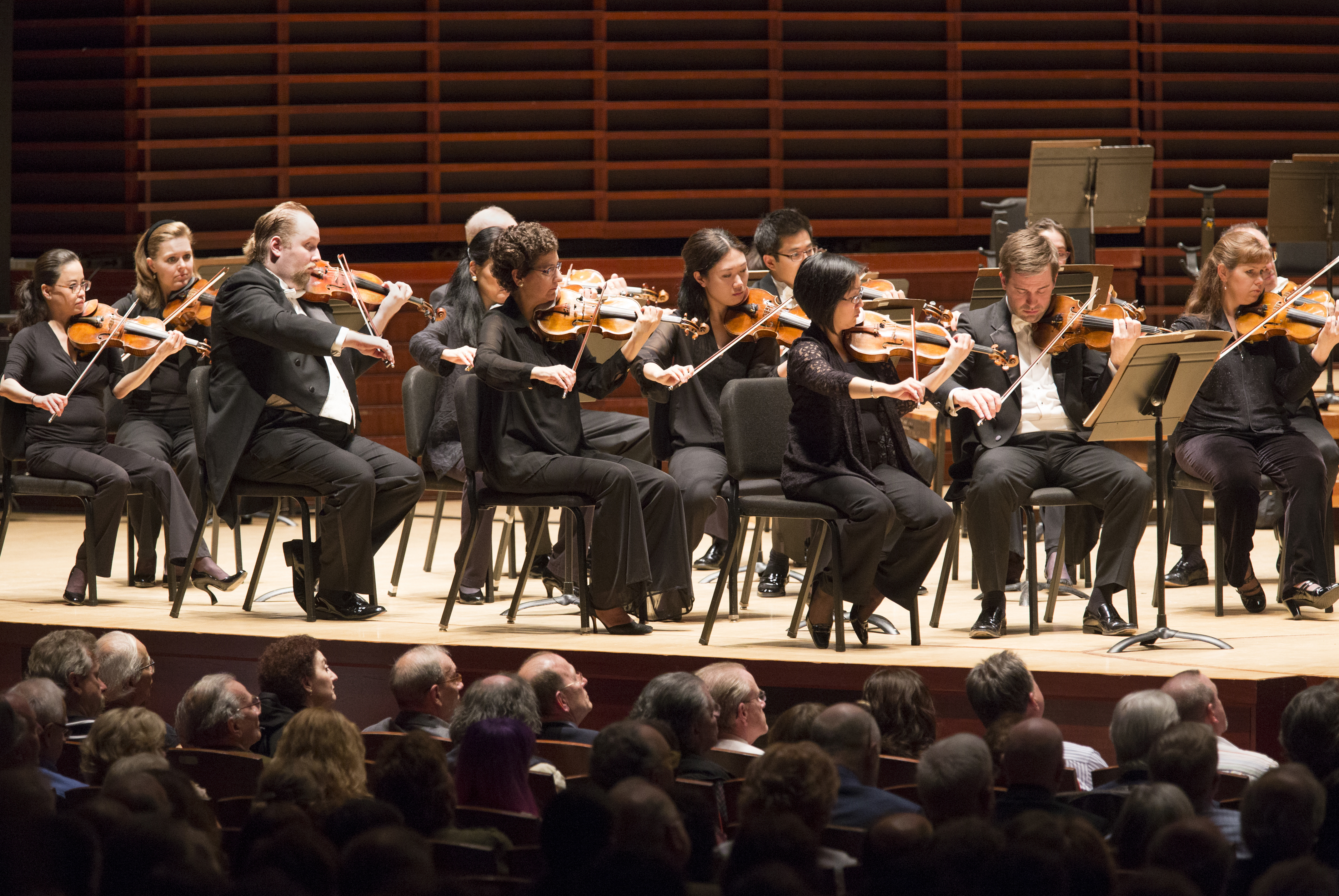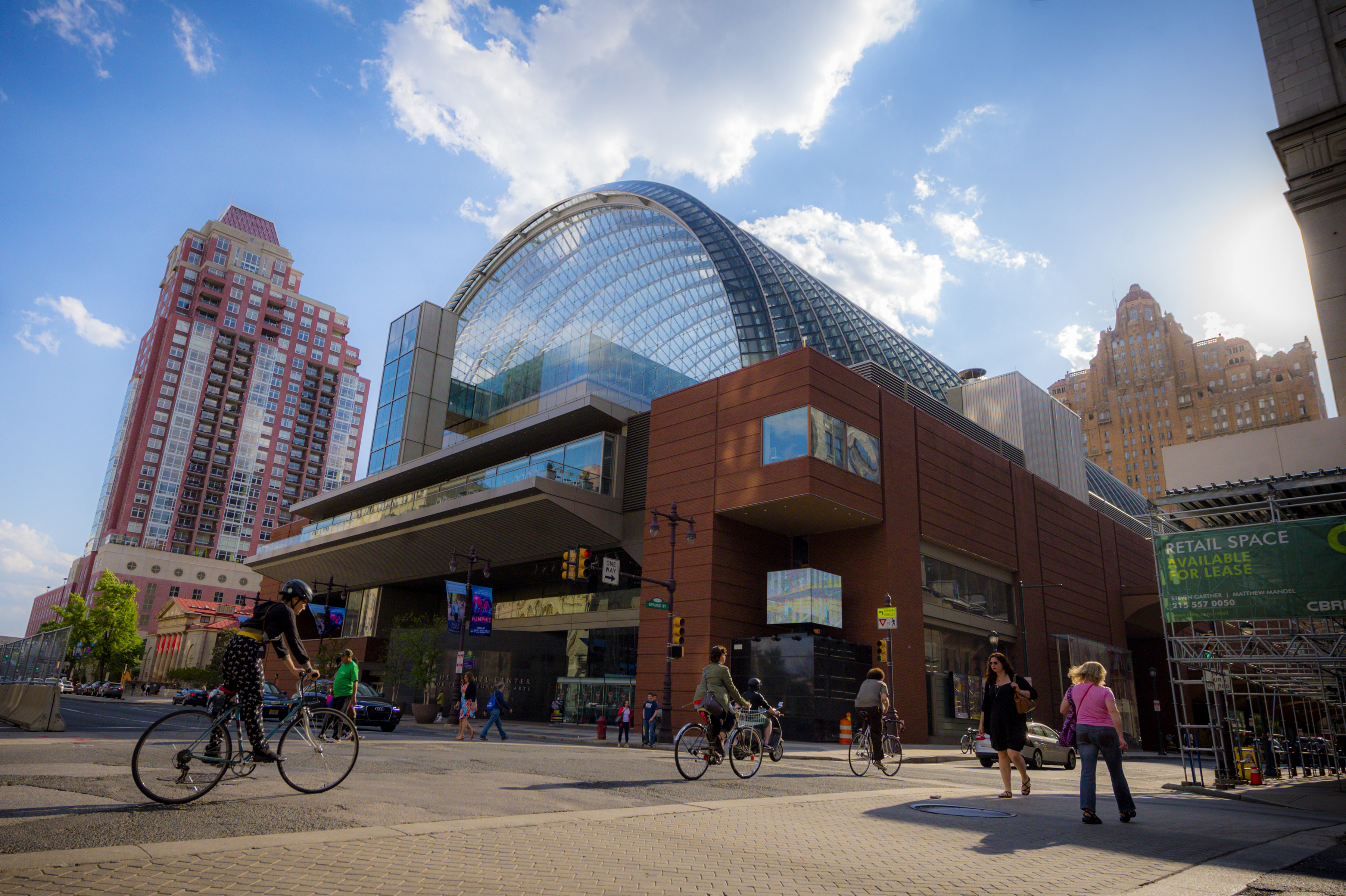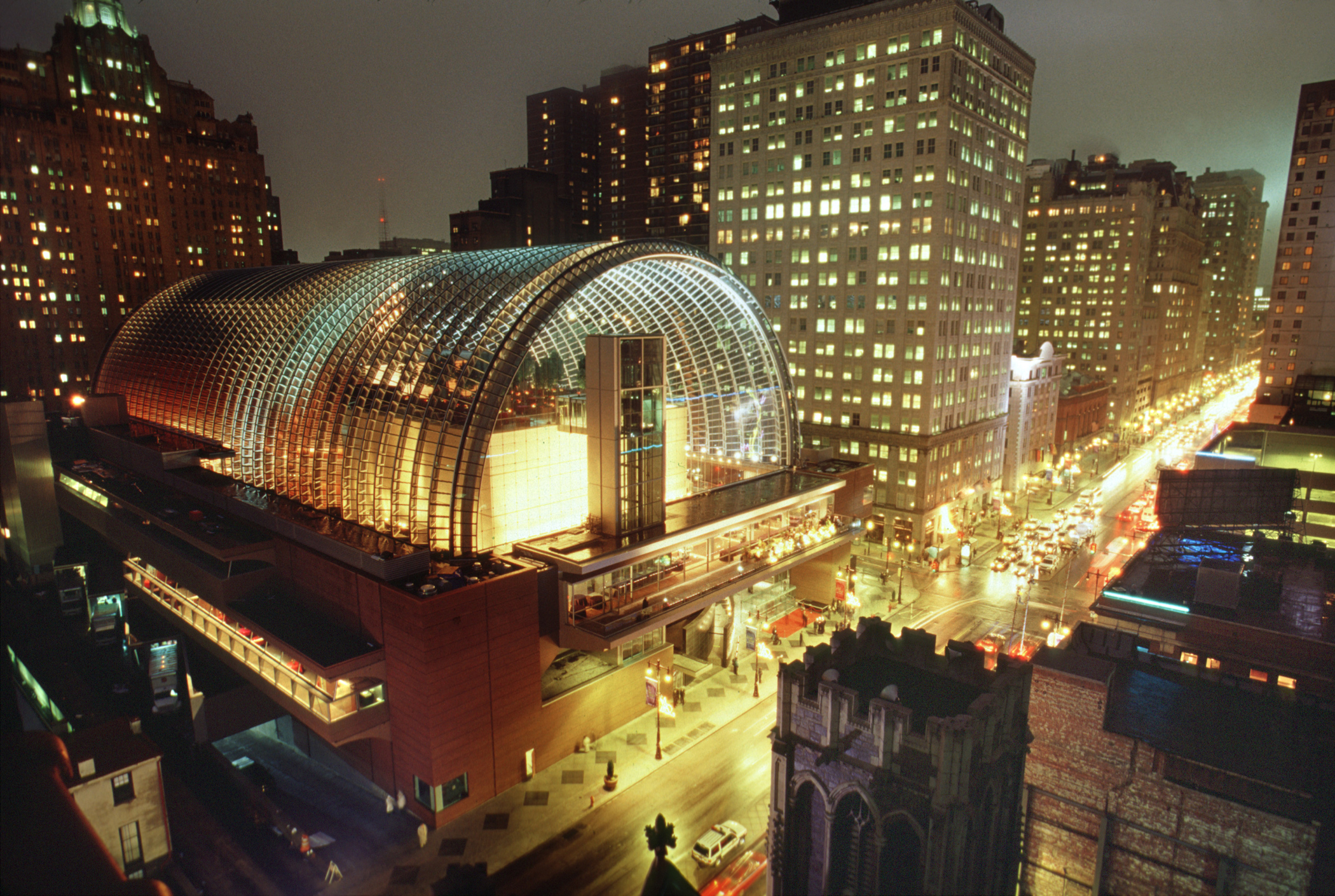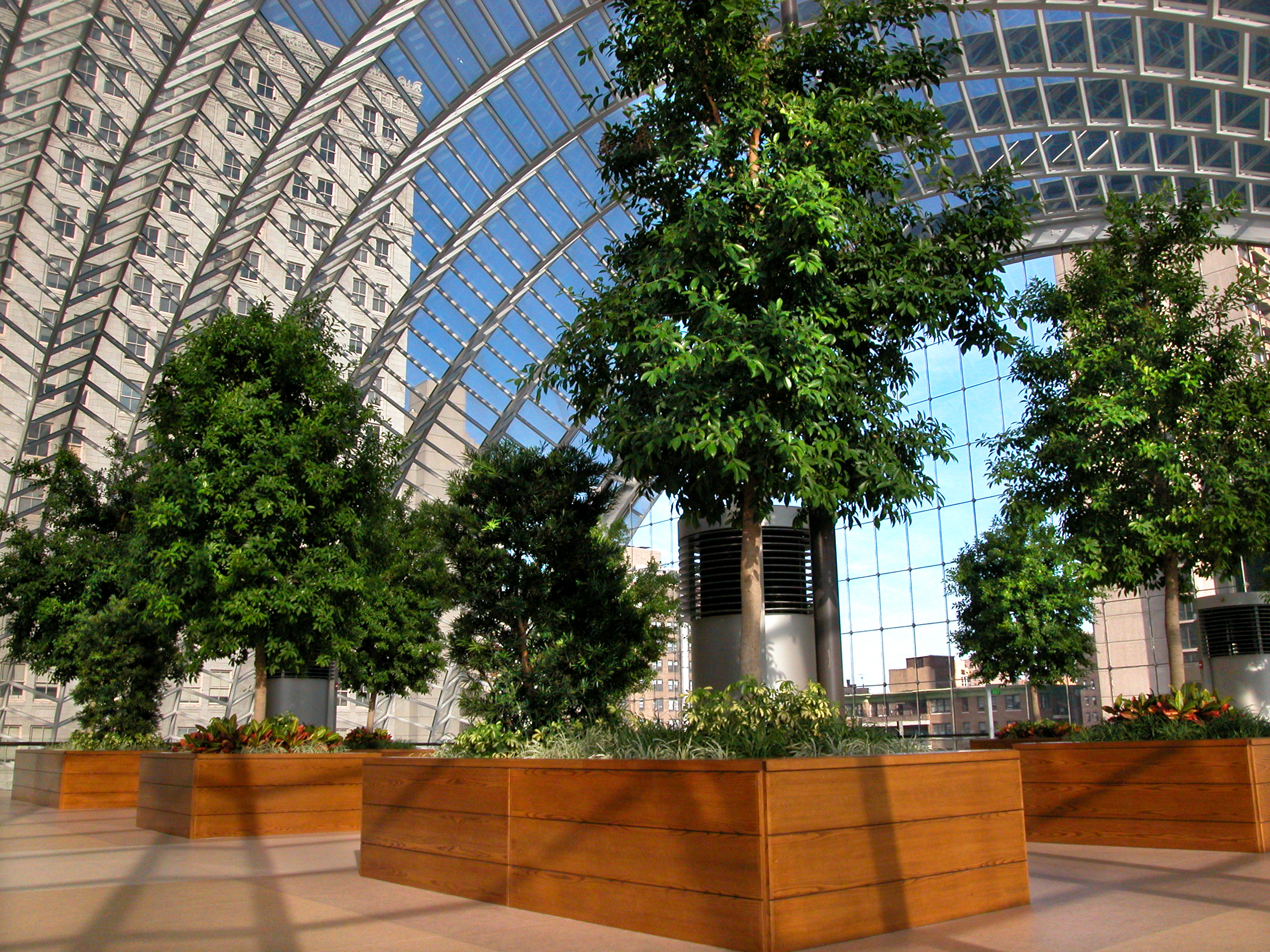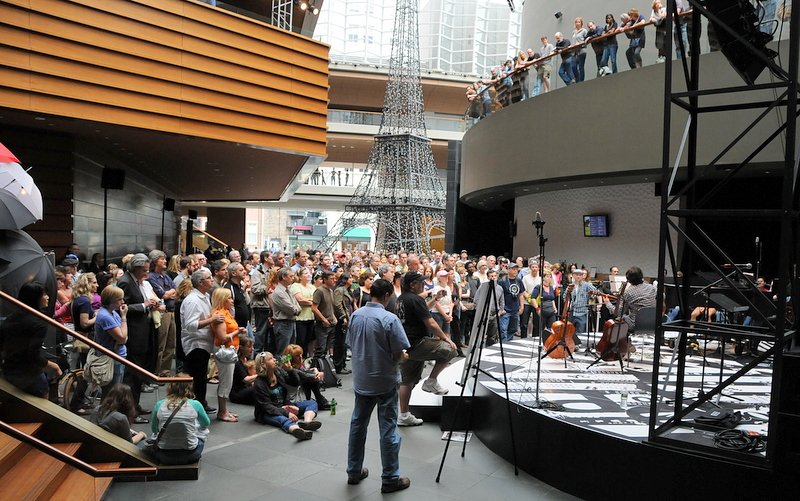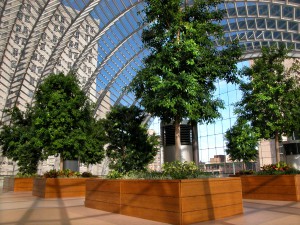Kimmel Center for the Performing Arts
By Dylan Gottlieb | Reader-Nominated Topic
Essay

The Kimmel Center for the Performing Arts was designed as the centerpiece of the Avenue of the Arts, a rebranded stretch of Broad Street devoted to performing arts venues. Built by a partnership of public and private entities, the Kimmel Center was part of a wider plan to revitalize Center City via the construction of new entertainment attractions. Since it opened at Broad and Spruce Streets in 2001, the Kimmel Center has attracted visitors from across the region to music and dance performances on Philadelphia’s revitalized arts corridor.
Since the 1970s, various institutions had tried to generate interest in building a flagship performance facility on South Broad Street. Proponents of a new concert hall argued that the Academy of Music, the mid-nineteenth-century building that was home to the Philadelphia Orchestra, Opera, and Ballet, was undersized and overbooked. In 1977, the Old Philadelphia Development Corporation (OPDC) established the Avenue of the Arts Council (AAC) under the direction of Richard S. Ravenscroft (1938-2013). The AAC was charged with helping to promote Broad Street as a performing arts destination and study the feasibility of constructing a roughly 3,000-seat performance hall for the Philadelphia Orchestra.
In 1981, OPDC created Academy Center Inc. (ACI) to manage the purchase of a lot for the concert hall. Using funds provided by the Pew Charitable Trusts, ACI purchased the Academy Apartments, a building on the northeast corner of Broad and Spruce Streets, with the intention of “demolishing it and using its site as part of the planned arts center.” Although the site was not ultimately used for the concert hall, its purchase sparked interest in a comprehensive arts center along South Broad Street. A 1983 plan called for a new orchestra hall, along with an $8.5 million renovation for the Academy of Music and a $3.3 million update of the nearby Shubert Theater. ACI director Ravenscroft was confident that the orchestra could raise the funds to build its new home, noting, “Before, we were talking about whether it should be done. Now we are talking about how it will be done.”
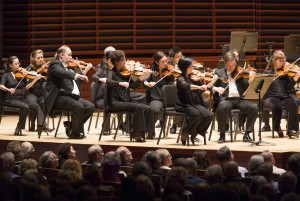
In 1986, the Philadelphia Orchestra and its supporters announced formal plans for a 3,200 seat hall—this time on the southwest corner of Broad and Spruce Streets. The next year, the orchestra’s board selected local architects Robert Venturi, John Rauch, and Denise Scott Brown to design the new building. The hall was expected to be finished in 1992 at a cost of $60 million. By 1989, when their plans were revealed, the cost had risen to $95 million and the expected completion date pushed back to 1993. The public was unenthusiastic about the design, and fundraising proved slow: by 1992, the orchestra had only raised $24 million towards construction.
As enthusiasm and fundraising for the project stalled in the mid-1990s, the orchestra board decided that in order to generate the necessary capital, the new facility would have to broaden its mission by including other local arts institutions. The project was the redubbed the Regional Performing Arts Center, and a new high-profile architect, Rafael Viñoly (b. 1944), was brought in.
In 1998, Viñoly presented his soaring $203 million design, which included two additional theaters and open spaces for public events under a vaulted glass roof. The main 2,500-seat hall was to be lined with sinuous wood curves that resembled the body of a cello. It would be joined by a smaller second recital hall with a café and garden on its roof, along with a 200-seat black-box theatre. At the announcement, Mayor Edward Rendell (b. 1944) declared that the design would soon be hailed as “the signature building of our generation.” But cost overruns remained an issue; by the time construction began in November 1998, the price of the building had risen to $245 million.

In December 2001, the 450,000-square-foot facility finally opened as the Kimmel Center for the Performing Arts, renamed to honor lead donor Sidney Kimmel (b. 1928). Philadelphia Inquirer architecture critic Inga Saffron (b. 1957) hailed the building, calling it a “bold, new treasure”—even if she was less enthusiastic about the use of drab brick for its exterior. Reviews of the main concert hall’s acoustics were also mixed. A decade after it opened, sound engineers were still tweaking the hall to improve its sonic resonance.
The Kimmel Center continued to face criticism in the years to follow. Its common spaces were decried as unwelcoming, and in 2008, design consultants solicited public input while preparing to remodel them. The roof garden, intended to serve as a revenue-generating events space, also required extensive renovations. In the 2010s, work began on enclosing the garden in a glass sheath to improve its climate control and sound isolation. Ultimately, the Kimmel Center’s rocky reception only exacerbated the orchestra’s ongoing financial woes. Budget shortfalls and lackluster attendance forced the orchestra to shorten its seasons, cancel guest appearances, and periodically contemplate bankruptcy.

In the years to follow, the Kimmel Center’s other resident companies—the Chamber Orchestra of Philadelphia, the Chamber Music Society, PHILADANCO, American Theater Arts for Youth, and the Philly Pops—joined the orchestra at the Kimmel Center. Although the new concert hall ultimately cost a staggering $265 million, it proved successful in generating economic activity. In its first three years of operation, the Kimmel Center added $321 million to the local economy, including $17 million in state and local tax revenue. Perhaps more importantly, the Kimmel Center helped to reestablish Philadelphia as a world-class destination for the performing arts.
Dylan Gottlieb is a Ph.D. candidate at Princeton University, where he works on recent American urban history. (Author information current at time of publication.”
Copyright 2015, Rutgers University
Gallery
Backgrounders
Connecting Headlines with History
- Kimmel Center and unionized stagehands make a deal in Philadelphia (WHYY, October 14, 2011)
- $14 million Kimmel Center project revamps roof garden, brings new restaurant (WHYY, April 2, 2012)
- No more sweltering at Kimmel Center's rooftop garden (WHYY, September 6, 2012)
- Philly's All City Orchestra plays Kimmel Center, then Italy (WHYY, June 18, 2015)
- Philadelphia Orchestra will bring to light music from City of Light as part of next season (WHYY, January 19, 2016)
